#rasbora fascination
Photo


the whole family came over to welcome star to their little cabin 🥺
#fascination legacy#random legacy challenge#ts4#ts4 legacy#ts4 gameplay#berry sweet sims#fascination gen 7#star fascination#diva fascination#watermelon blossom-pepsico#royal blossom-pepsico#rasbora fascination#baja blast pepsico#raven flyte#I FIGURED IT OUT i think the rando from all those screenshots is rasbora's kid#also... bb still being alive makes me so emo
2 notes
·
View notes
Text
BALIKTURLERİ - MEGA+ (2)

Kuhli loach are a popular freshwater aquarium species known for their unique appearance and peaceful nature. These bottom-dwelling fish have long, slender bodies with distinctive black and brown stripes running the length of their bodies. Kuhli Loaches are social creatures and should be kept in groups of at least six to eight. They are shy and sensitive and require plenty of hiding places in the aquarium to feel secure. Kuhli Loaches are omnivores and will eat a variety of foods, including algae wafers, sinking pellets, and live or frozen foods. In terms of tank requirements, Kuhli Loaches prefer a well-planted aquarium with plenty of hiding places and a soft, sandy substrate. They also require clean, well-oxygenated water with a pH between 6.0 and 7.5 and a temperature range of 75-86°F. Kuhli Loaches are peaceful fish and can be kept with other non-aggressive species, such as rasboras and tetras. However, they should not be kept with aggressive or territorial fish, as they are easily intimidated and can become stressed. When it comes to care tips, Kuhli Loaches are relatively low-maintenance fish. They do an excellent job of keeping aquariums clean by eating leftover food and other debris. However, they require a varied diet to ensure optimal health and should be fed a mix of commercial and live or frozen foods. Kuhli Loaches are also sensitive to water conditions and should be monitored closely for signs of stress or illness. Overall, with proper care and attention, Kuhli Loaches can be a fascinating and rewarding addition to any freshwater aquarium.
1K notes
·
View notes
Text
Blue Moscow Delta Guppies: Explore the Enchanting World of These Aquatic Gems
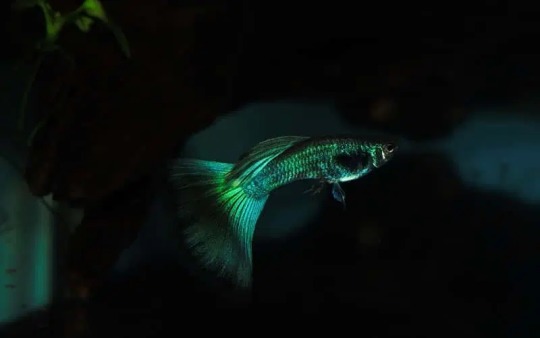
Introduction to Blue Moscow Delta Guppies
Mesmerizing Appearance: Blue Moscow Delta Guppies are a true visual spectacle. Their sleek bodies boast a mesmerizing blue hue, reminiscent of the crystal-clear Moscow river. Accentuated by metallic scales that shimmer like stars, their forked tail fins resemble delicate butterfly wings, adding to their overall elegance.
Social Nature: Known for their active and social tendencies, Blue Moscow Delta Guppies make excellent companions in any aquarium, catering to both beginners and experienced hobbyists.
Varieties to Explore: Dive into the world of "Sapphire Splash" and "Cerulean Dream," two popular varieties offering unique takes on the stunning blue coloration.
General Information
Russian Charm: Originating from the Moscow Delta region in Russia, Blue Moscow Delta Guppies bring a touch of Russian charm to your aquarium.
Modest Size: These guppies reach a modest size of 1.5 to 2.5 inches on average, making them ideal for smaller aquariums.
Lifespan: With proper care, expect a lifespan of 2 to 3 years, though some may surpass this under ideal conditions.
Peaceful Temperament: Naturally peaceful, these guppies thrive in community tanks, making them compatible with other non-aggressive fish species.
Colorful Varieties: Embrace a variety of colors, including "Royal Blue," "Steel Blue," and "Electric Blue," each offering a unique shade and intensity.
Price Range: Prices vary based on factors like color, pattern, and breeder reputation, ranging from $5 to $20 per fish on average.
Habitat and Tank Requirements
Natural Habitat: In their native Moscow Delta region, these guppies inhabit slow-moving freshwater bodies, thriving in densely planted areas with ample hiding spots.
Ideal Tank Size: Provide a comfortable living space with a recommended tank size of at least 10 gallons. Larger tanks support social behavior among a small school of guppies.
Water Parameters: Maintain slightly alkaline water with a pH level of 7.0 to 7.5 and a temperature between 72°F to 82°F. Ensure good filtration and regular water changes for a pristine environment.
Thoughtful Tank Setup: Create a natural environment with live or artificial plants, driftwood, and smooth substrates like sand. Include hiding spots and floating plants to mimic their native habitat.
Feeding
Omnivorous Diet: Blue Moscow Delta Guppies enjoy a varied diet of high-quality flakes, pellets, and freeze-dried foods. Supplement with live or frozen treats for optimal health and coloration.
Feeding Habits: Displaying enthusiastic appetites, feed small portions multiple times a day, ensuring they consume their food within a couple of minutes.
Recommended Foods: Options include Hikari Micro Pellets, TetraColor Tropical Flakes, Omega One Freeze-Dried Bloodworms, Fluval Bug Bites, and live or frozen brine shrimp.
Breeding
Livebearer Reproduction: Females release fully formed fry into the water after carrying developing embryos, showcasing a fascinating livebearing process.
Breeding Requirements: Maintain optimal water conditions, a higher ratio of females to males, and provide hiding places for fry to escape predation.
Spawning Process: Courtship involves vibrant displays by males, leading to mating and multiple batches of fry. Fry are born fully developed and need hiding spots to avoid predation.
Common Health Issues
While generally hardy, Blue Moscow Delta Guppies may face common aquarium diseases. Minimize risks with clean water, quarantine procedures, and a balanced diet. Regularly monitor for signs of distress.
Special Considerations
Compatibility: Blue Moscow Delta Guppies thrive with peaceful tankmates like Neon Tetras, Harlequin Rasboras, and others. Avoid aggressive or fin-nipping fish.
Special Care Instructions: Ensure well-maintained aquariums with stable water parameters. Regular testing and maintenance are crucial for their health and longevity.
Legal Restrictions: Be aware of local regulations on the ownership and breeding of Blue Moscow Delta Guppies. Some areas may impose restrictions or requirements for specific fish species.
Which Blue Moscow Delta Guppies Varieties Can Be Kept Together
Explore compatibility with seven suitable tankmates, including Neon Tetras, Harlequin Rasboras, and Cherry Shrimp.
Difference between Male and Female Blue Moscow Delta Guppies
Identify characteristic differences, similarities with other guppies, and unique features that set Blue Moscow Delta Guppies apart.
In conclusion, dive into the enchanting world of Blue Moscow Delta Guppies, appreciating their unique characteristics, care requirements, and the joy they bring to any aquarium.
0 notes
Text
I know I’m being spammy HOWEVER I forgot to mention something very cool about Pygmy cories and chili rasboras! They both change color. Chili rasboras get more vivid when they’re healthy and happy, and more washed out when they’re stressed and unhealthy. Pygmy cories change how light or dark they are to match how light or dark the substrate is! Such fascinating little creatures.
0 notes
Text
Looking for a fish that's out of this world? We present: the Celestial Pearl Danio, also known as the Galaxy Rasbora! These little fish are a fascinating species with a unique history.
1 note
·
View note
Text
Absolutely obsessed at the combination of my bad memory and hyperfixations. I stumbled across a rant post I made a few years back when I was in my fishkeeping phase, but I don’t have any memory of making that post. I’m astonished at how knowledgeable and opinionated I was on the topic whereas now I couldn’t tell you why rasboras have a “fascinating social life” lmao
1 note
·
View note
Text
Why I lost respect for Rachel O'leary as a fish keeper
Here are some screenshots from her book, “ The 101 Best Freshwater Species: How to Choose & Keep Hardy, Brilliant, Fascinating Nano Fishes, Plants and Invertebrates. “
Lemme tell ya, these are some SPICY tanks, so prepare yourselves.




Hilariously undersized tanks, schooling fish without schools, incompatible species..
Don’t worry, the care info in the book is just as bad.

1 gallon tank for a betta!

2.5g tank for chili rasboras!

10g tank for a 4″ pleco!
I could go on.
139 notes
·
View notes
Text
Why Sororities?
Honestly can someone explain the appeal of betta sororities to me? I don't get why you'd want to set up a risky and potentially life threatening tank when there are so many other options. The fact that people advise for larger and heavily planted tanks for a better chance at success just speaks to the fact bettas aren't made to be housed together. Like if I need a 100 gallon heavily planted tank to just house 5 female bettas successfully (which it's been proven to fail) then I'm just going to say fuck it and set up a peaceful, multispecies tank that is way more interesting imo. Plus, if my fish have to hide 24/7, I might as well have an empty tank with just plants.
What else I don't get is there are so many great alternatives. Guppies are just as colorful as female bettas, and they're also live bearers which is fun and unique to experience. Schooling fish like tetras and rasboras are fascinating to watch in regards to their social life. And corydoras are literally the cutest fish I've ever laid eyes on when they're using their itty bitty barbels to forage in the sand. And these are only some of the fish you can keep!! I get it if bettas are your favorite fish (I absolutely adore my boy) but is it even fulfilling to keep them if they can't express their full range of personalties and behaviors because they're constantly stressed tf out?? I'm just so perplexed why people go so hard defending sororities. They're not worth it fam. For so many reasons!!
8 notes
·
View notes
Note
so i am starting a new saltwater tank, and i was wondering if there were any species of fish you'd recommend. also do you have any freshwater favorites or recommendations?
If (when because let's be real it'll happen) I ever go into saltwater tanks I will undoubtedly start with clown fish and anemones. The movements made by anemones fascinate me and I think some super vibrant maroon or black clowns would look fantastic swimming with them.I'm also a fan of a few types of wrasses, they always seem to catch my eye in the fish stores. But I have not done any research into these fish and really cannot recommend them without having more knowledge/experience.As for freshwater! This is something I can give lots of recommendations for! You haven't mentioned a tank size so I can't give recommendations tailored to your situation, but I'd say never rule out any fish!I have kept pretty fish, ugly fish, big fish, and small fish, and honestly they've all been the best choices I could ever make.Large fish demand large tanks, I had a Columbian catfish over a foot long that was so rewarding to keep! He was purchased as a very small juvi and I had no idea he would grow so large until he put on a couple inches in a few short months and I did some serious research. He has since passed, but I can say with 100% certainty that he was my all-time favorite fish and I plan on housing others in the future.Currently I have 22 neon tetras in a 55 gallon planted tank and with 100% certainty they are my all-time favorite fish. No I'm not joking. These fish are so common and branded such a beginner fish that people who have been in the hobby for a bit just seem to look over them! I looked over them for years!!! But not anymore! These fish are small, vibrant, hardy, and damn lively! Their bright blue shimmers so beautifully as they speed through the water ducking in and out among the anubias leaves. I also find it unbearably funny when they tease the dwarf mexican crayfish.I'm also a big fan of Harlequin rasboras. Really just all rasboras. They're just a very cute family of fish. Also don't rule out invertebrates! Snails, shrimp, crabs, crays, etc. There are a lot of things out there with beautiful colors and markings that will make any tank unique.I think I've gone on long enough for now lol, if you would like any more specific suggestions let me know how big a tank you've got! Thanks for the ask!- Sarah
6 notes
·
View notes
Photo



#fascination legacy#random legacy challenge#ts4#ts4 legacy#ts4 gameplay#berry sweet sims#fascination gen 6#tetra fascination#tiger lily fascination#rasbora fascination
5 notes
·
View notes
Photo
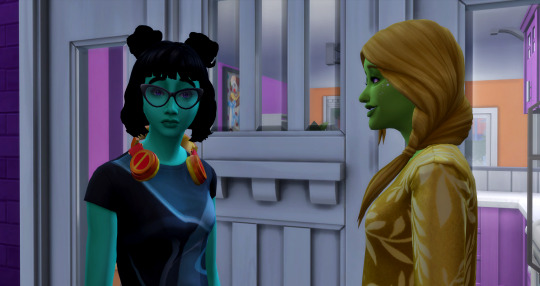
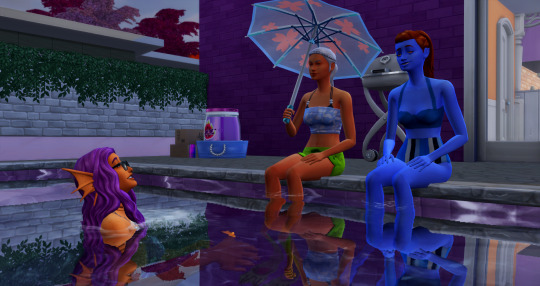

#fascination legacy#random legacy challenge#ts4#ts4 legacy#ts4 gameplay#berry sweet sims#fascination gen 6#tetra fascination#sierra mist pepsico#rasbora fascination#flora butterfly#idr who that other gal is LOL#tetra just invited coworkers over iirc
2 notes
·
View notes
Text
Introducing the Butterfly Goldfish: Every Stroke of its Fin Is Beautiful
As far as ornamental fish go, Butterfly Goldfish are the most graceful and beautiful. With their flowing fins that look like butterfly wings, these delicate creatures captivate viewers with their beautiful looks. Let's go out into the world:
Butterfly Goldfish are known for having a unique look, thanks to their long, flowing fins that look like butterfly wings. These beautiful fish are different from other types of goldfish because their bodies are smooth and their fins are long and graceful. Their colors can be very different, from bright oranges and reds to soft blacks and whites.
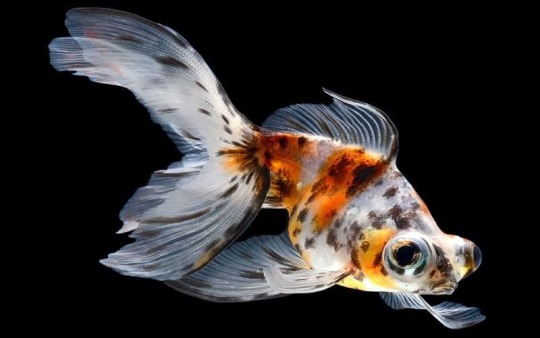
Information in general: Origins and Characteristics
Needs for Habitat and Tank: Offering a Beautiful Home
Butterfly Goldfish live in still or slowly moving water in their natural environment all over China. When making a good home for them in captivity, think about the following:
Feeding: A Variety of Healthy Foods
Give them a well-balanced diet to keep them healthy and their bright color. The main thing that goldfish should eat is high-quality pellets or flakes. You can also add live or frozen foods like brine shrimp, daphnia, and bloodworms to their meals to make them healthier and give them more options.
Breeding: How to Spread the Word
Due to their flowing fins, which can make it hard to move during the spawning process, breeding can be both fun and difficult. Controlled conditions, lots of space, and careful attention are needed for breeding to go well.
Common Health Problems and Being Careful
Goldfish are usually tough, but they can get common health problems like swim bladder disorder, parasitic infections, and fungal problems. To avoid these problems, make sure the water is clean, feed them a balanced diet, and treat any signs of illness right away.
Important Things to Think About: Compatibility and More
Because Butterfly Goldfish are calm, they can live in community tanks with other fish that aren't aggressive and need the same amount of water and space.
Types of Fish That Get Along for a Harmonious Aquarium
When choosing fish to keep with your goldfish, think about Fantails, Ryukins, and calm fish like tetras, rasboras, and guppies.
Gender Differences: Hints and Tips
Butterfly Goldfish don't have clear secondary sexual traits, so it can be hard to tell the difference between male and female fish. During breeding season, however, females may look bigger because they have eggs on their bodies.
Butterfly Goldfish vs. Standard Goldfish: Classy vs. Traditional
Butterfly Goldfish are related to Standard Goldfish, but their long, flowing fins make them easy to tell apart. Standard Goldfish are known for their classic beauty, and they add an extra touch of class to the water world.
In conclusion, Butterfly Goldfish are the epitome of elegance in the aquatic world. Their graceful fins and calm personalities make them a favorite among fish lovers. Aquarists can enjoy the timeless beauty and long lives of these fascinating aquatic friends by giving them the right environment and careful care.
0 notes
Photo
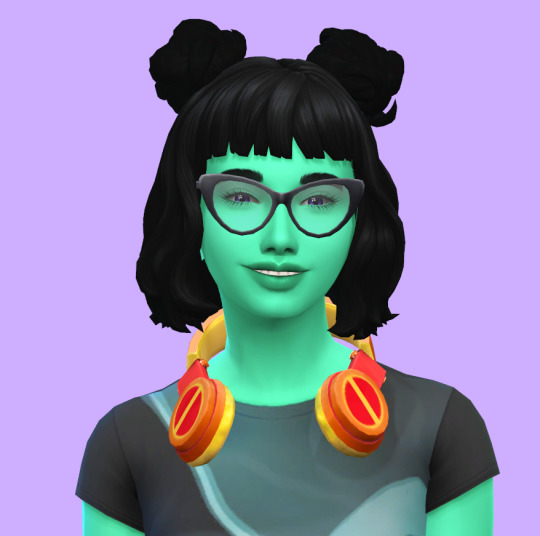

Rasbora Fascination - Erratic, Glutton // Big Happy Family
... see you in gen 6 :-)
#fascination legacy#random legacy challenge#ts4#ts4 legacy#ts4 gameplay#berry sweet sims#fascination gen 5#rasbora fascination
7 notes
·
View notes
Photo
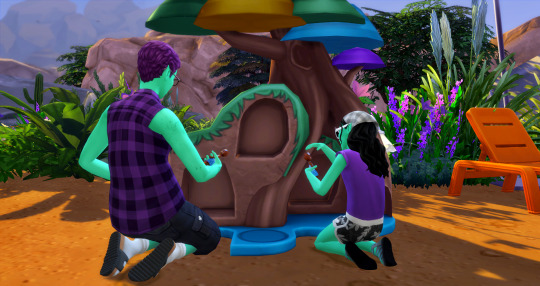


we’re nearing the end of this whole gen 😭
#fascination legacy#random legacy challenge#ts4#ts4 legacy#ts4 gameplay#berry sweet sims#fascination gen 5#baja blast pepsico#rasbora fascination
14 notes
·
View notes
Photo

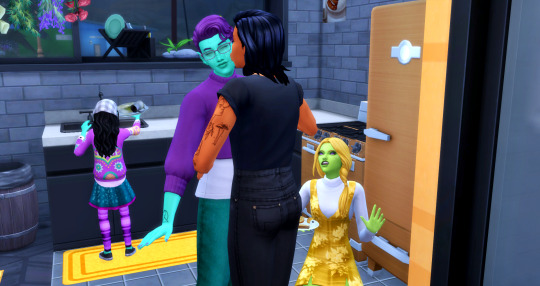

sierra mist: EW what are you DOING???
#fascination legacy#random legacy challenge#ts4#ts4 legacy#ts4 gameplay#berry sweet sims#fascination gen 5#tiger lily fascination#baja blast pepsico#sierra mist pepsico#rasbora fascination
7 notes
·
View notes
Photo
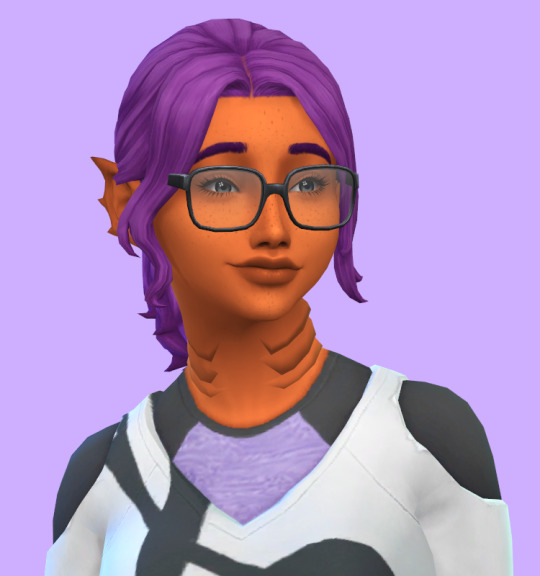


Tetra Fascinaion - Genius, Music Lover // World Famous Celebrity
Rasbora Fascination - Erratic
#fascination legacy#random legacy challenge#ts4#ts4 legacy#ts4 gameplay#berry sweet sims#fascination gen 5#tetra fascination#rasbora fascination#tetra really shaped up to fit her gen perfectly
7 notes
·
View notes